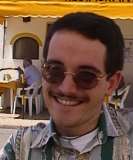Evolution
|
We write the Year 1974. Portugal has awakened shook up by a revolution on the 25th of April of that year, a revolution that was going to catapult this small western European country into the twentieth century. From this day forth, the country would start to develop in a way that was, in the least unpredictable. We will focus on the southern region of Portugal known as the Algarve. The Algarve, due to its de-central location, was one of the most backward regions of Portugal. All it had to offer were long, sandy beaches and a beautiful, crystal clear ocean all hidden behind a chain of hills and mountains, shielding it from the rest of the world. The locals limit themselves to fishing, farming or simple handicraft, showing no anxiety to accompany the rhythm of the rest of the world. Nevertheless, every stranger that arrived in their town with a few bags seeking to discover new corners of the world, they greeted warmly, not knowing that these early discoverers were to be the future conquerors of their peaceful little corner of the planet. Praia do Carvoeiro, a small, sleepy fishing village hidden away from the main roads, in a small green valley on the coastline of the Algarve, secluded and untouched by the racing development that swept through Europe after the second World War was an absolutely secret advice for anyone seeking to discover the perfect spot for a vacation, to settle down and seek refuge from the rest of Europe. This was to be the beginning of a race to the coastline. At first, the strangers would buy small plots of land along the coastline and build houses facing the ocean and the sun, later the plots would become larger, more numerous, destined to become larger tourist developments. During the 80´s decade the construction fever would reach a peak, that would slowly start to clog up the small unprepared Algarve. In many areas the authorities did not react to the dangerous situations that were developing in their council. Large buildings began to shoot into the sky, towering high over the small fishing villages. Apartment complexes designed to accommodate the ever-growing crowds of tourists that began to flow into the Algarve began to appear on the outskirts of all the small villages along the coastline. All except one: Praia do Carvoeiro was to be shielded effectively by the Lagoa council, which decreed that no building may exceed the cliff line above two stories, thus forcing the developers to concentrate on individual villa projects rather than large hotel complexes. The character of this development can be seen in the urbanisations around Carvoeiro. These feature some of the highest luxury that can be found in the Algarve. The 90´s decade was marked by stagnation in the building industry. This was due largely to the recession in England end of the 80´s, which forced many house owners to sell their properties in the Algarve, thus pushing the prices down. Since then the building activities have reached a "normal" level, also due to the lack of free plots. Nevertheless, 20 years were enough to transform the Algarve into a giant tourist resort that attracts over 3 million tourists per year. Carvoeiro alone has capacities for over 40 thousand people but has the great advantage of being spread out in a four kilometer radius around the town. Nowadays the Algarve can offer everything one can ask for. Its greatest features are the long beaches and secluded coves along the south and the West Coast and the beautiful golf resorts spread out across the countryside. The nightlife features a large number of bars and discos in Praia da Rocha and Albufeira as well as two of the largest discos in Portugal. The Algarve has almost 300 days of sunshine per year and 6000 kilometers of Atlantic ocean supply the freshest, healthiest air in all of Europe. If you are looking for that little secluded fishing village you just have to stand at the top of the hill opposite the church and look down upon the bustling square and the beach, not focussing on the buildings that now cover the sides of the once secluded green valley.... René Kalkbrenner 26-10-1999 |


 by René Kalkbrenner
by René Kalkbrenner